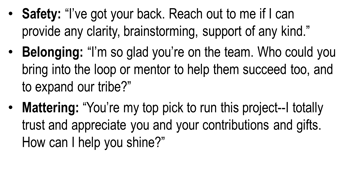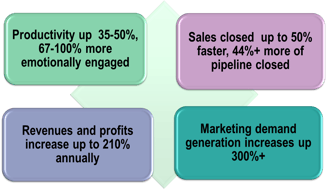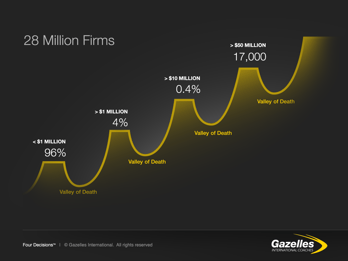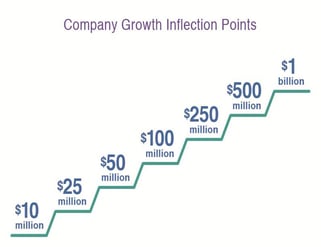 If you lead a team, or business, or simply manage a group of people for your organization you know this feeling. An passion to help each person you lead or manage to perform at their highest level; to reach and exceed their potential capabilities.
If you lead a team, or business, or simply manage a group of people for your organization you know this feeling. An passion to help each person you lead or manage to perform at their highest level; to reach and exceed their potential capabilities.
Aren’t we all interested in getting the most from our people? Getting them to reach into the depths of their talent and skills to help them achieve more than they thought possible?
When I was manager and then owner of a radio station I recall sharing with prospective employees my vision of what my job was. My parents grew up during the Great Depression. Everything had a value, each and every item in our home found its’ way to be recycled for another purpose. My mother required me to clean out every jar or can of products we purchased to make sure nothing was wasted.
Peanut Butter was my favorite sandwich spread, and I had no problem cleaning the jar of peanut butter out to ensure every bit of the deliciousness wouldn’t escape my craving.  I’d use a spatula to clean out the jar, even using my fingers to guarantee no trace of it would go to waste.
I’d use a spatula to clean out the jar, even using my fingers to guarantee no trace of it would go to waste.
My job, I would relate to a prospective employee was to make sure I discovered every bit of skill, talent, and ability they had. Then help them to utilize these in pursuit of becoming a better person, contributor, and in the process discover how that would translate into enhancing and growing our radio station. I guaranteed each individual I interviewed that they would not leave without my full commitment to make them a better contributor to our radio station, but more importantly, discover the latent skills and talents they had the potential to supply. I would scrape out every bit of their talent and abilities in pursuit of making them the best, just as I had done with my peanut butter jar to discover every luscious bit of deliciousness it could provide me.
That was my commitment to them if they would join our radio station.
Possibly the best presentation in terms of ROI and potential growth for a business at the Orlando Leadership Summit was Christine Comaford’s Smart Tribes.
What do people crave most?

According to Comaford People Crave Safety, Belonging & Mattering. These three lead to Trust in your organization.
Comaford explained the functions of the brain and how our people are either in critter state or smart state.
Christine offered a thought that echoed my learning from my coaching with Michael Gerber’s E-Myth Revisited, “People are essentially unmanageable. Most attempts to control and manipulate people will ultimately fail. Since we’re dealing with an American workforce where 71% of workers are emotionally disengaged and simply working for the money, we know it’s essential to fix our state of so-called leadership.”
That’s similar to Michael Gerber’s E-Myth Revisited, “A manager does not manage people. People are unmanageable. The manager manages the system.” Or as I offered in Strategic Discipline’s Fourth Discipline – Work Process Flow Charts, "You can't manage people. People are unmanageable!"
Bill Gates called Comaford “super high bandwidth.” The results she shared with the audience that Smart Tribes Consulting has achieved are impressive.
Results from individual team members in a Smart Tribe:
- 97% tangibly contributed to increasing key executive strategic/high-value time by five to fifteen hours per week.
- 63% received a promotion to a role with increased responsibility and management of others within six months of applying our techniques via coaching and training.
- 100% increased their ability to influence others and outcomes significantly.
- 86% reported getting more done in less time due to the accountability techniques they learned.
- 100% reported the ability to apply our communication techniques and thinking styles both at home and at work, resulting in an increase in personal fulfillment.
Most impressive are the results the organizations received with these below being the average increase for twelve firms with performance-enhancing cultures.  These are displayed in the image on the left.
These are displayed in the image on the left.
Comaford noted that since people are essentially unmanageable—attempts to control and manipulate people will ultimately fail. When driven by fear, human beings go to one of three places:
- They get stuck.
- They solve problems that don’t exist.
- They focus on the wrong problem, which is low leverage, and doesn’t deliver the result they want.
Fear pushes people to take action. Vision pulls people not only to take action but also to care about the outcome.
As leaders, we often unintentionally send our teams into the part of their brains where optimal performance is tremendously compromised. This can happen when a company is navigating rapid growth where internal priorities are frequently shifting and the team is challenged to quickly adapt and stretch
- Has unclear directives
- Has inconsistent accountability structures and communication rhythms
- Has a culture where the blind spots and challenging behaviors of the leaders are not being addressed
- Has unresolved conflict and/or low alignment among the leadership of the company Is changing its business model or executing a complete company turnaround
All of the above are common in growth scenarios.
When companies grow, they come to certain places where the things that used to work, the things that created a level of success, don’t work anymore. We call these inflection points. These crucial points are tied to revenue and company growth
Are You Approaching an Inflection Point?
 Here’s the trouble with inflection points: at each one you have a whole new company. At each inflection point, a company must reinvent itself in order to reach it and move through it. If a company doesn’t adapt, it will become stuck and ultimately decline into a parabolic upside-down curve, rather than an undulation back into growth mode.
Here’s the trouble with inflection points: at each one you have a whole new company. At each inflection point, a company must reinvent itself in order to reach it and move through it. If a company doesn’t adapt, it will become stuck and ultimately decline into a parabolic upside-down curve, rather than an undulation back into growth mode.
How do you navigate between inflection points? How do you maintain and increase your momentum to avoid organizational stuck spots—the spots of stasis usually found between inflection points where the company stops growing and swirls around at approximately the same level of annual revenue before sliding precipitously backward? How do you get into the Smart State—the safe, secure, intelligent state of teamwork that will get you to the next inflection point, when the game reaches the next level?
The only way to break the endless cycles of an organizational stuck spot is to start treating the system instead of individual symptoms.
But here’s the hitch: organizations (systems) tend to be reflections of all the people who work there—especially the leaders. That means that for your organization to change, everyone has to be involved, starting at the very top and working down the organizational chart to the people on the front lines. It also means leaders must work on themselves.
This is perhaps one of the greatest barriers to growth in any organization. Leadership views the problem as their people. They refuse or fail to accept their role in change.
“We must become the change we want to see in the world.” — Mahatma Gandhi
One thing that’s reassuring about inflection points is that they are relatively predictable;  Comaford noted they consistently see companies getting stuck at specific revenue levels.
Comaford noted they consistently see companies getting stuck at specific revenue levels.
Organizations travel through relatively predictable revenue inflection points. You are either moving up through inflection points or sliding down and losing momentum. Swirling in place is not sustainable. At each revenue inflection point, a company must reinvent itself and its people, money strategy, and business model.
- How are your sales?
- What’s the process of creating and converting new business?
- Are your incentive programs working?
- Are sales commissions tied to profit per sale?
Comaford provided five tools in her presentation to help navigate through inflection points.
Tool #1: Create Safety, Belonging & Mattering
Tool #2: Truly Engaging Mission, Vision, Values
Tool #3: Individual Development Plans
Tool #4: Cultural Rituals, Rock Star, High Five, Appreciation
Tool #5: Transparency, Accountability Structures, Feedback, Fairness
By far one of the most powerful messages Comaford offered was helping managers and leaders get their people from critter state to smart state. We’ll cover some of the questions and techniques she recommended next blog.
The video is from Verne Harnish’s interview with Christine at the Leadership Summit in Orlando.






.jpeg?width=150&height=135&name=Hand%20with%20marker%20writing%20the%20question%20Whats%20Next_%20(1).jpeg)

